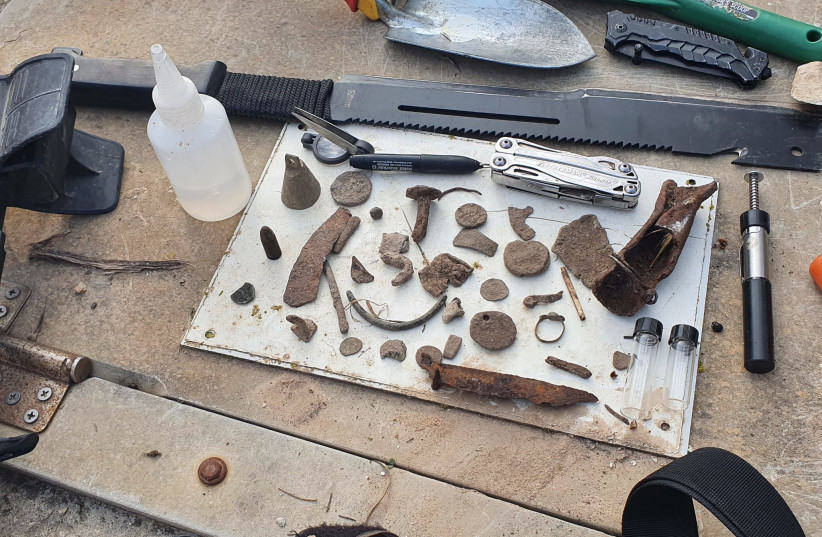An ancient coin of Antiochus IV – the Greek ruler known as "Antiochus the Evil" and king during the rebellion of the Jewish Maccabees – was discovered Tuesday after the Israel Antiquities Authority raided the home of a man who was accused of pillaging artifacts in a protected area of Kiryat Shmona.
The coin, dating back to 169-164 BCE, was discovered in the house of a suspect after he was caught walking around Ramot Menashe – a protected archaeological site – with a metal detector. After searching the suspect’s home, authorities discovered the rare coin among a trove of ancient coins, artifacts, digging tools and metal detectors.
Antiochus IV is remembered as a major villain and persecutor in Jewish history. Known as “Antiochus the Evil” in Jewish texts associated with Hanukkah, his policies signaled a departure from the previous rulers’ tolerance of Jews to policies that persecuted the Jewish population, which eventually led to the Maccabean revolt in 167 BC.
"Antiochus, king of the Seleucid kingdom, was officially named ‘Epiphanes’ – the face of God, but behind his back his subjects called him Epimanes - the crazy Antiochus."
Dr. Danny Shion
"Antiochus, king of the Seleucid kingdom, was officially named ‘Epiphanes’ – the face of God, but behind his back his subjects called him Epimanes - the crazy Antiochus," said retired Israel Antiquities Authority coin researcher Dr. Danny Shion.
Shion also explained that the coin is a special mint by King Antiochus IV from when he granted special rights to 19 cities in the Seleucid Kingdom and that the coin was minted in the city of Tzur.

Antiquities Authority warns against illegal digging
While the suspect claims they were simply looking for geological finds, the Israel Antiquities Authority search turned up many finds that he found in illegal land excavations throughout the North, including arrowheads, rings, make-up tools, buckles, lead objects, buttons, and more.
"Although the find is beautiful and the timing of its discovery (just) before Hanukkah is exciting, we must not forget that the suspect broke the law. Many looted items were found in his house. The suspect claimed to be a geology enthusiast that was looking for quartz crystals and metals, but ‘on the way' also collected coins and ancient artifacts," declared Nir Distelfeld, the inspector of the robbery prevention unit at the Israel Antiquities Authority in the northern region.
"The removal of ancient finds from the antiquities sites harms the possibility of researching the site and extracting knowledge from it.”
Eli Eskosido
"The removal of ancient finds from the antiquities sites harms the possibility of researching the site and extracting knowledge from it,” added Israel Antiquities Authority Director-General Eli Eskosido. “Disconnecting the finds from their context harms the history of all of us, and permanently removes priceless information from the eyes of researchers and the public."
The Antiquities Authority also reiterated that searching for artifacts using metal detectors at antiquities sites in Israel is prohibited by law. The fixed penalty for committing these offenses is three years in prison.
